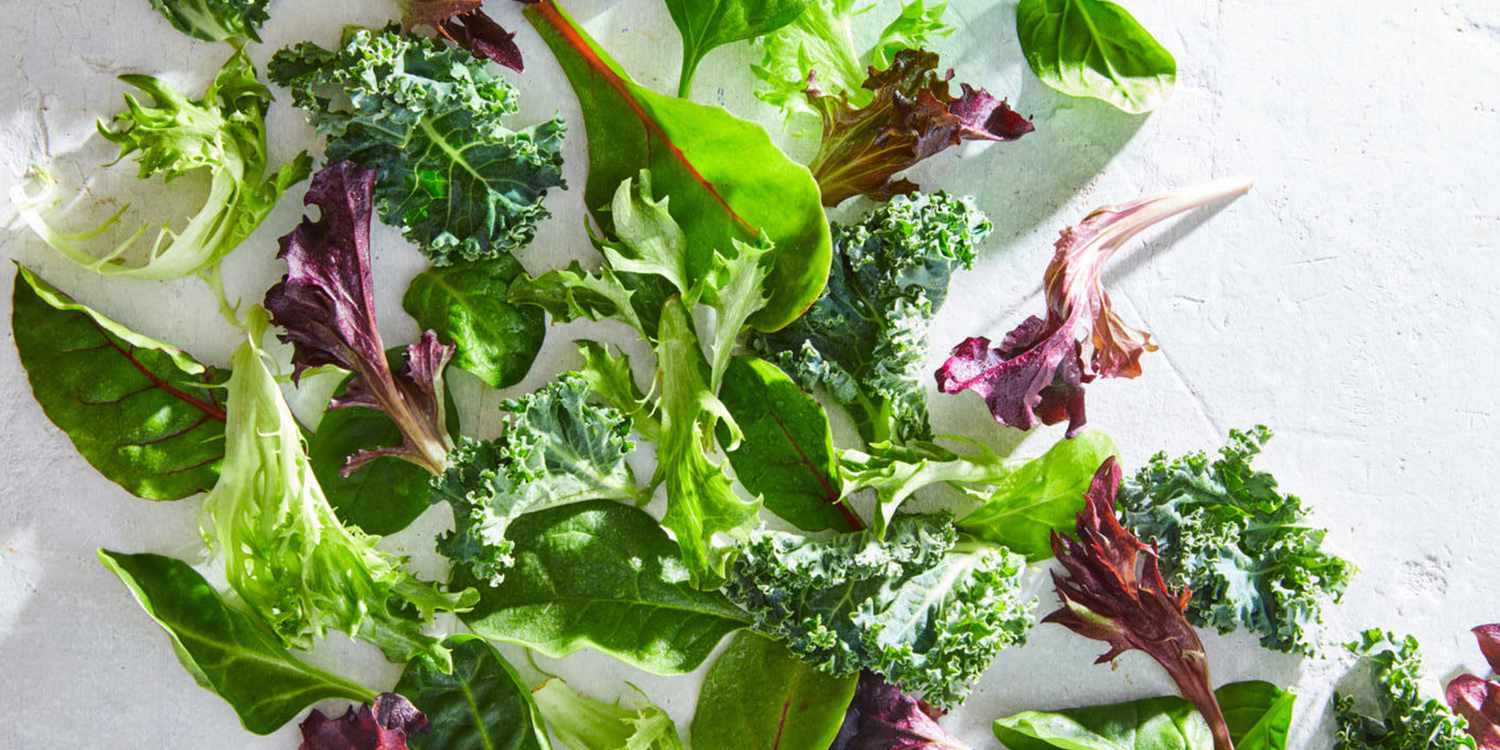If you love making leafy green salads, then you may be inclined to buy spring mixes, spinach, lettuce leaves or arugula in bags or containers. The downside is that leafy greens don’t last long, especially when you notice a couple of leaves appear slimy. Knowing there have been recalls of contaminated leafy greens leading to foodborne illnesses, it is normal to wonder what to do with the bagged or boxed greens with slimy leaves. We spoke with a food scientist to find out the best way to handle slimy leafy greens, and here’s what he said.
Why Do Salad Greens Turn Slimy?
Microbes like bacteria are everywhere, including in edible produce. Edible produce picks up microbes during growth, harvesting, and processing.
When combined with air and moisture, the microbes start breaking down the greens faster, according to Brian Chau, food scientist and principal of Chau Time, a San Francisco-based food consultancy firm.
Bagged or boxed greens with leafy greens cut or taken apart from lettuce and cabbage only last three to five days from the date of purchase, compared to lettuce and cabbage heads that have a shelf life between one to two weeks, according to the USDA. And once the salad greens package is opened, the greens stay fresh for two days.
What If There Are Only a Few Slimy Leaves in the Container? Can I just Pick Them Out?
If there are a few slimy leaves in the package or container, Chau says you can pick them from the bag or container and check the rest for smell or slime. He adds, “If [the rest is] intact, then [you can enjoy the remaining package as] the decay process hasn’t affected the other leaves.”
Soaking leafy greens in household vinegar and patting them with a dry paper towel to remove the moisture may also reduce the number of bacteria present, but doing so will not kill the bacteria. This step could leave your salad greens a vinegary flavor, but it also makes the greens a perfect pairing with a vinaigrette.
If your top priority is food safety, Chau notes that cooking the unaffected leaves can also ensure the unwilted and plumped leaves are safe to eat, as the heat kills any existing bacteria. Still, if half of your container or package consists of wilted and slimy greens, you may be better off composting it entirely instead of picking out the unaffected ones.
Tips for Buying the Freshest Greens
Buy local: Locally grown greens travel fewer distances than produce harvested farther away, so they could last longer than others from other locations.
Check the expiration date: Buy packages with an expiration date that is the farthest from the date of purchase. You also don’t want to buy more than what you can eat. If the package looks moist or if you see a few leaves look slimy or wet, it is best not to bring them to checkout.

Get the recipe: Easy Greek Salad
Talk to the staff in the produce section: The staff in the produce section may share with you when they get their shipments, so you can come on the day of the week when the freshest greens arrive.
Buy uncut heads of lettuce and cabbage: As much as bagged or boxed greens offer convenience, they could also be at a greater risk of contamination during processing.
Buying heads may be better, especially if you have food safety concerns. When you prepare your own salad with the lettuce or cabbage head, you can always remove the outer leaves, where the contamination typically is, while the inner content stays uncontaminated.
Tips for Storing Salad Greens So They Stay Fresh
Keeping your salad greens fresh starts with how you handle them as soon as you leave the grocery store or the farmers’ market:
Use an insulated cooler bag
Use an insulated cooler bag to place your salad greens so that it maintains at the right temperature, especially on hot days.
Open your bagged or boxed greens once you are home
When you are home, open the package by placing the leaves on dry paper towels or clean and sanitized towels. Look for and discard any wilted leaves. Laying them out also helps with identifying leaves that look slightly moist. Use a paper towel to pad them lightly, or place them in a salad spinner to remove the excess water.
Stow them in an airtight container
Then, place the leaves back into its original plastic container. If they are bagged greens, store them in a clean and airtight container to limit humidity. Before closing the lid, have a folded paper towel to line the bottom and top of the container to absorb any excess moisture.
Also, check out the container daily to ensure the paper towels remain dry. If you see dampness, it’s time to eat them or change the paper towels out to extend their freshness.
Finally, stow the greens and other produce that wilts quickly, like asparagus, eggplant, fresh herbs, and strawberries, together, in the fridge’s crisper drawer. Setting the crisper drawer at high humidity setting doesn’t allow airflow, extending the produce’s shelf life.
Related:
- The Types of Salad Everyone Needs to Know About
- Top Rated Sweet and Savory Summer Salads
- Light and Fresh Salad Recipes For Your Next Potluck




